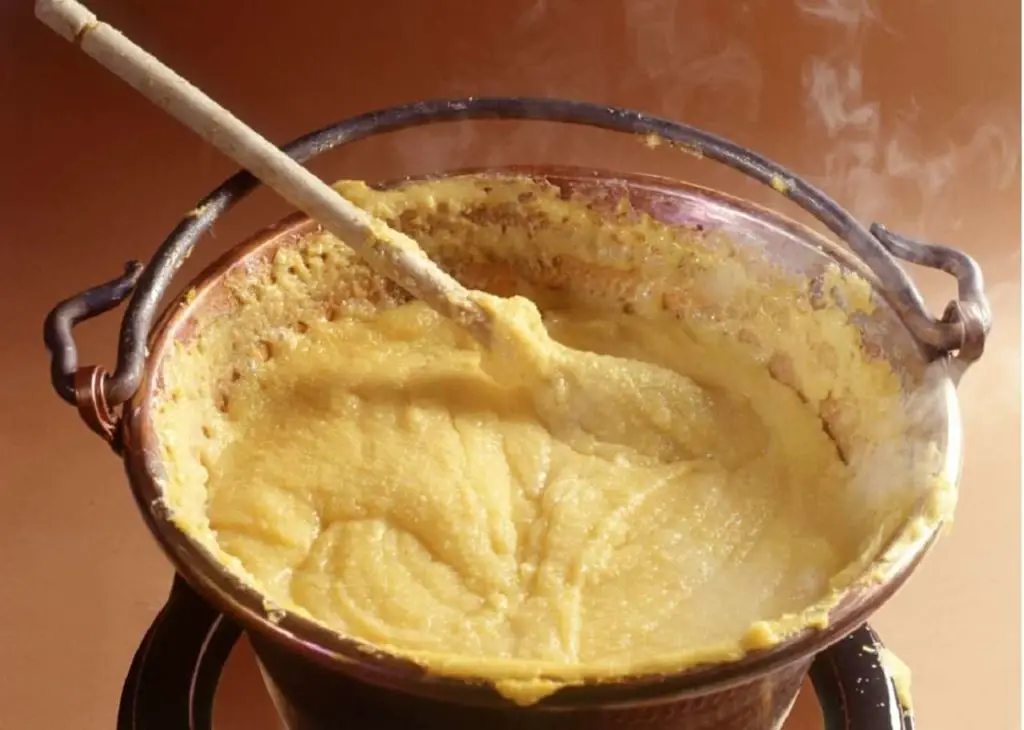Polenta is a staple of Italian cooking, specifically northern Italy. The main ingredient of polenta is corn, which has been ground into flour or meal.
It still retains the sunny yellow color of corn, and has a sweet taste, making it perfect for baking and savory dishes alike. Uncooked, ground polenta can also be used to replace flour.

Polenta has served as a bread substitute since Roman times, even before corn was introduced to the Americas, in which case it was made with spelt, chickpeas (see also How To Freeze Hummus), millet, or other sources of starch.
Like many things which have cornmeal as the base (See also Can You Freeze Grits?), polenta freezes with no problem at all. Which is perfect, as it means you can have polenta at the ready for whenever you want it.
All About Polenta: Shelf Life, And How To Make Sure It Freezes Properly
The Shelf Life Of Polenta
The shelf life of polenta depends on what type of polenta you mean. If you mean ground polenta, or the kind you buy in a non-refrigerated aisle, it should last several months somewhere cool, as long as it’s in an airtight container.
Once you open polenta, you’ll need to store it in the fridge, where it may last up to a week.
When it comes to making polenta as a dish, you’re better off using it the day you make it, or within two days. It will also last for about 3 months in the freezer, but you should aim to use it within a month.
How To Ensure Polenta Freezes Well
The best way to make sure that polenta freezes the best it can is to get the consistency right. The texture of cooked polenta should be creamy and moist, without being watery or claggy.
When making polenta at home, make sure to wait until the dish is cold before you try to freeze it, and then don’t wait around.
Freezing it when it’s as fresh as possible will mean that it will keep as much of its quality as possible during the freezing and thawing process.
Also consider dividing the polenta into single servings. This will make both processes a lot quicker, and prevents you from having to use all the polenta in a very short space of time – and wasn’t that the problem to begin with?
If you know that you want to freeze polenta before you make it, consider leaving out any dairy or other ingredients which could affect the freezing process.
Ingredients such as double cream or milk won’t help, as these kinds of dairy products readily separate when you freeze them, which will significantly reduce the quality of the polenta once it has been frozen and thawed.
You can always add them once it has thawed. For best results, boil the polenta in either stock or water, and you can decide on the other ingredients when you come to reheat it.
The Different Types Of Polenta
It’s worth knowing what type of polenta you have, or what type you want, as different types of polenta have different textures and flavors, making them suitable for different purposes.
Bramata
One of the more widely-used types of polenta, Bramata has an interesting texture as the corn flour is stone-milled, giving it a rustic charm. You can also cook it in several ways, or coat fries in it before cooking them to add extra flavor.
Fioretto
Fioretto is best suited for baking rather than as a side dish. If you want a silkier version of polenta, Fioretto is the best one to go for.
While it is most often used in baking, you can use it as a batter ingredient to make vegetables or fish crisper, and to give them more flavor.
Bianca
White polenta, also known as polenta Bianca, is more difficult to find than other types of polenta, and it features a very mild flavor, and a creamy texture.
It’s better suited for dishes that need a delicate compliment, to not upset the balance of flavors within the dish.
Taragna
Taragna is a type of polenta that’s not just made of cornmeal, but also ground buckwheat. This makes it one of the more vitamin-packed forms of polenta, and has a stronger flavor.
It’s great for dishes that need some extra depth.
Integrale
Integrale polenta has a base of whole grain cornmeal, which completely transforms it. It is much rougher in texture than other types, and also has a much stronger depth of flavor. It’s also one of the most nutritious.

How Do You Freeze Polenta?
Once you’ve cooked the polenta, transfer it into a shallow tin lined with parchment. Once it cools, you’ll notice it’s solid enough to cut it.
Divide the polenta into single servings, and cover each portion in either foil, cling film, or parchment paper, making sure there are no gaps.
Transfer the parcels into a large, resealable freezer bag, making sure there’s no excess air when you seal it. Label the bag, and freeze it.
How To Defrost And Reheat Polenta
Take as many pieces of polenta out from the freezer as you need. Remove the protective paper or foil, and let it sit on a plate on the counter, and it will thaw at room temperature.
As it defrosts, get rid of excess moisture beading on the top with a paper towel.
It’ll be ready once it’s thawed but still cold. To reheat, put it in a saucepan over a fierce heat, and fry it until it’s a lovely golden brown.
